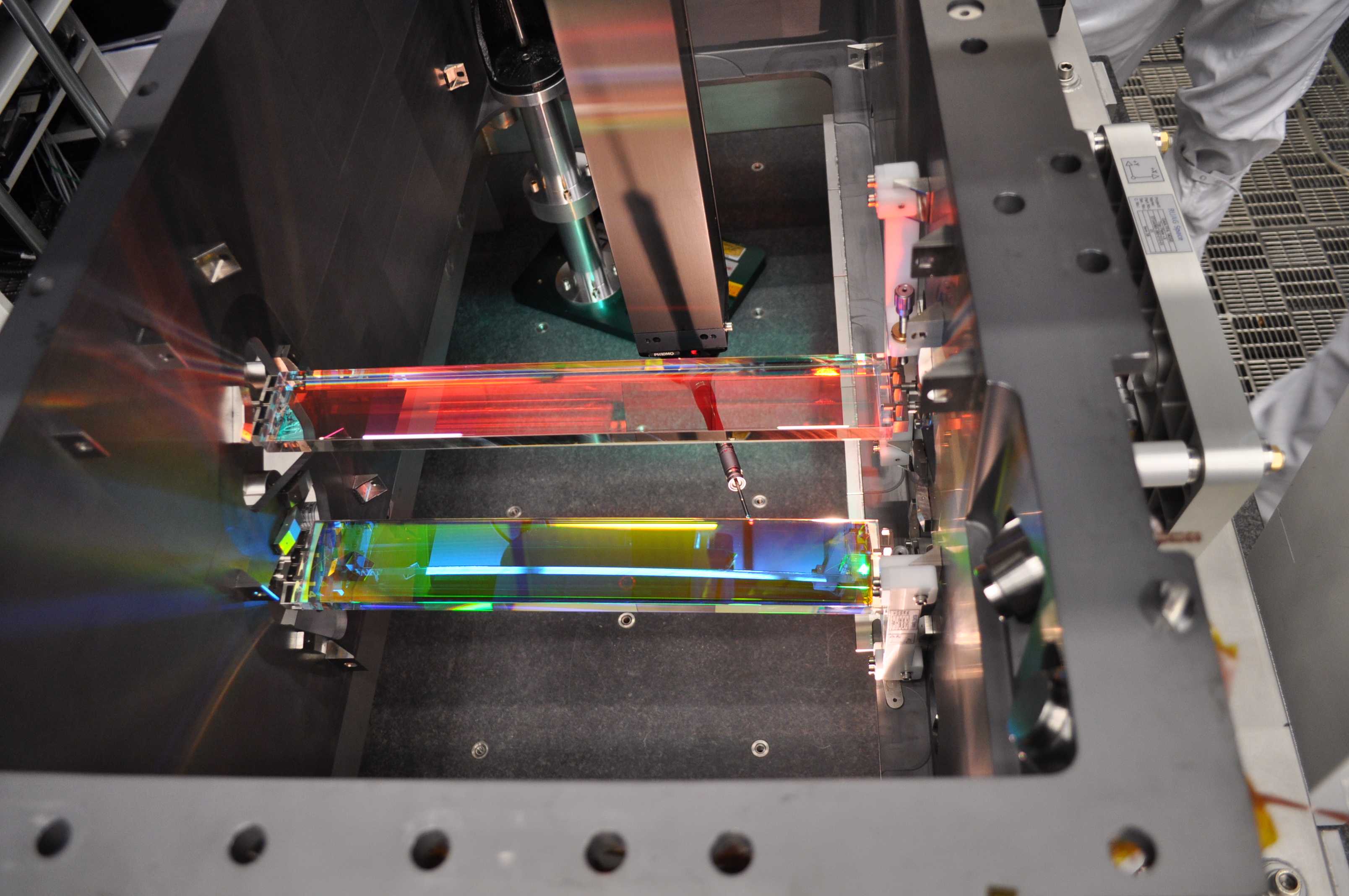Photometric Instrument - Gaia
Photometric instrument |
| Gaia's photometric instrument consists of two low-resolution fused-silica prisms dispersing all the light entering the field of view. One disperser - called BP for Blue Photometer - operates in the wavelength range 330–680 nm; the other - called RP for Red Photometer - covers the wavelength range 640–1050 nm. The prisms are located between the last telescope mirror (M6) and the focal plane. These measurements of the spectral energy distribution yield key astrophysical information, such as temperatures, gravities, metallicities, and reddenings, for each of the vast number of stars observed. |
|
The photometers and Radial Velocity Spectrometer (RVS) are both integrated with the astrometric instrument and telescopes. As a result, the light from the two viewing directions is superimposed on the photometric and RVS CCDs. RVS and BP/RP use the (astrometric) sky mapper function for object detection and conÿrmation. Objects will be selected for RVS observation based on measurements made slightly earlier in the Red Photometer.
|
 |
|
credit: Airbus DS The spectral dispersion of the photometric instrument is a function of wavelength and varies in BP from 3 to 27 nm pixel−1 covering the wavelength range 330–680 nm. In RP, the wavelength range is 640–1050 nm with a spectral dispersion of 7 to 15 nm pixel−1. The 76%-energy extent of the line-spread function along the dispersion direction varies along the BP spectrum from 1.3 pixels at 330 nm to 1.9 pixels at 680 nm and along the RP spectrum from 3.5 pixels at 640 nm to 4.1 pixels at 1050nm. |
- Removed a total of (2) style text-align:center;
- Removed a total of (1) style text-align:left;
- Removed a total of (1) border attribute.
- Removed a total of (1) cellpadding attribute.
- Removed a total of (1) cellspacing attribute.








































 Sign in
Sign in
 Science & Technology
Science & Technology